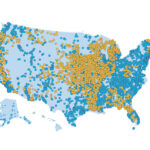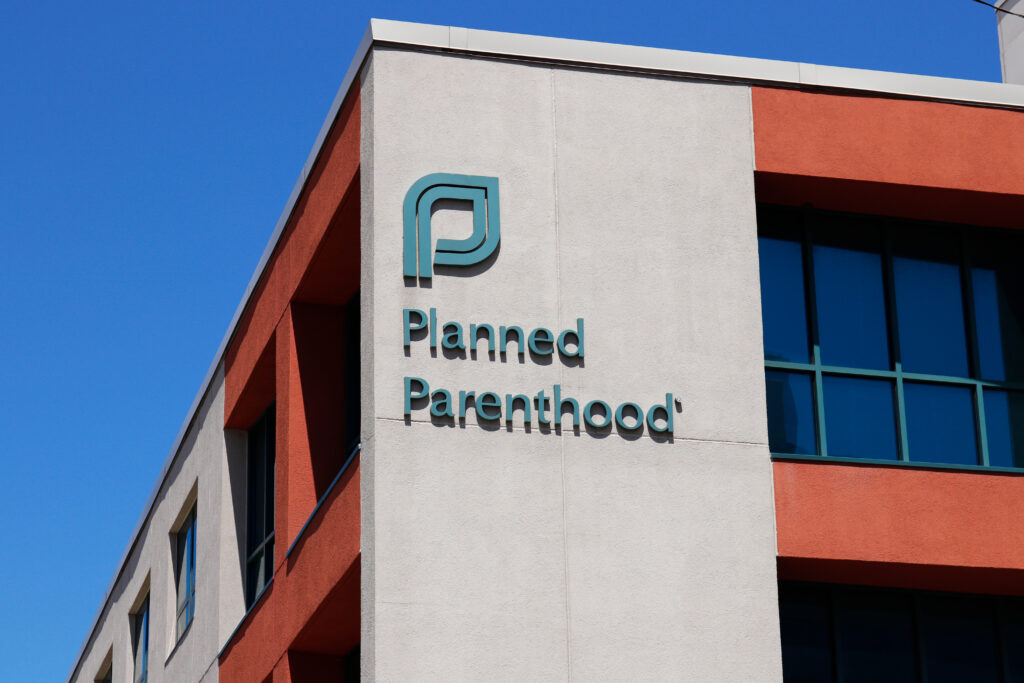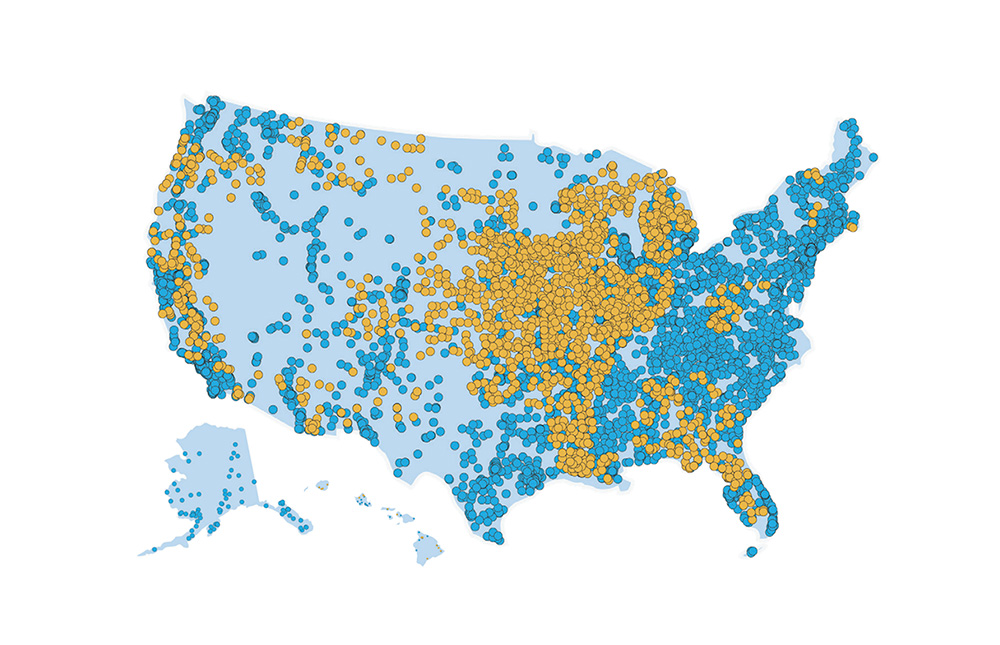Abortion Reporting: Colorado (2017)
Colorado’s 2017 abortion report shows that abortions have increased from the previous year. The Colorado Department of Public Health and Environment provided statistics to the Charlotte Lozier Institute upon request and has since published the report online.
Changes in Colorado Abortions, 2016-2017

Abortion Totals and Trends
In 2017 there were 8,873 abortions reported in Colorado, an increase of six percent from 8,333 the year before (Fig. 1). However, abortion in Colorado has declined by two percent from the total reported in 1974, the first full year after Roe v. Wade legalized abortion nationwide. Colorado abortions have dropped by 50 percent since 1980, when a record 17,601 abortions were reported. Chemical abortions made up 54 percent of all abortions reported in Colorado in 2017. Chemical abortions increased by 15 percent from 2016 and by 432 percent from 2003, the earliest year with information available on types of abortion procedures. Although Colorado has not reported the abortion rate for 2017, CLI estimates that the rate held steady from the previous year (Fig. 2).
State Report Summary
Eighty-eight percent of the abortions reported in Colorado were performed on Colorado residents. Wyoming residents made up the second-largest group of women, undergoing four percent of the abortions reported in the state. More than half of the women undergoing abortions, 59 percent, were in their twenties, while 10 percent were under the age of 20, 27 percent were in their thirties, and three percent were age 40 or older. These groupings are similar to the age distribution in other states.
A little over half of the abortions, 53 percent, were performed on non-Hispanic white women. The number of abortions performed on Hispanic women was suppressed due to its small number. Seven percent of the women were black and six percent were of a different race. However, racial information was not provided for 27 percent of the abortions reported in Colorado so the true numbers regarding race and abortion are unknown. Similarly, marital status was not reported for 15 percent of the women getting abortions, although 69 percent of the women were known to be unmarried, and 15 percent were married.
Fifty-nine percent of Colorado abortions were performed on women who had no living children. Sixteen percent had one child, and 21 percent had two or more, while this was unknown for four percent. Almost two-thirds of the reported abortions – 64 percent – were performed on women who had never had an abortion before. Twenty-two percent had one prior abortion, and nine percent had two or more. The number of previous abortions was unknown for five percent of the women getting abortions.
Many abortions – 90 percent of the state total – were performed in the first trimester at 12 weeks of gestation or earlier. Seventy percent were performed at or before eight weeks of gestation, 14 percent between nine and 10 weeks, and six percent between 11 and 12 weeks. However, a number of abortions occurred later in pregnancy. Four percent were performed between 13 and 15 weeks of gestation and two percent between 16 and 20 weeks. Three percent of the total, 285 abortions, occurred at 21 weeks of gestation or later.
Ninety-nine percent of the abortions reported in the state were performed in clinics or doctor’s offices. Just below one percent occurred in hospitals.
Late-Term Abortion
Colorado is one of only a few states that place no limits on how late in pregnancy an abortion can be performed. Notorious late-term abortion doctor Warren Hern has been performing abortions in Colorado since 1973, drawing referrals from all over the country. The abortion report provides no information on the reasons for late-term abortions and does not specify the exact week of gestation for abortions after 21 weeks. However, some women who have traveled to Colorado for late-term abortions have chosen to make their stories public. Some of the abortions performed in the third trimester are due to fetal anomaly. One mother whose baby had a brain malformation described traveling to Dr. Hern’s clinic from Massachusetts to get an abortion at 36 weeks. Another mother whose baby had an abnormality traveled to Colorado for an abortion at 32 weeks; she was given a fetal injection to stop her baby’s heart and flew back home to New York to deliver her aborted baby there. However, not all late-term abortions are performed because of an abnormality, and in fact, the available national data suggest that “most women seeking later terminations are not doing so for reasons of fetal anomaly or life endangerment.” In Colorado, one woman recorded a phone call during which she was able to schedule an abortion of a healthy, 31-week pregnancy. In 2017, more than a thousand women from different states traveled to Colorado for abortion procedures; the report does not state how many of these women came to Colorado for late-term abortions. Despite the growing prevalence of perinatal hospice as a response to a poor prenatal diagnosis – and the evidence that perinatal hospice can lead to healthier psychological outcomes for families – Colorado has no informed consent process to ensure that women have been given all of their options.
State Ranking
In 2016, CLI ranked the 50 states, New York City, and Washington, D.C. on the quality of their abortion reporting, scoring Colorado at 35th place. Colorado could improve reporting by collecting and reporting information on the specific facilities where abortions are performed, the reasons why women choose abortion, and the precise gestational ages at which they occur – particularly relevant statistics for a state that can serve as a destination for late-term abortion procedures. As a growing number of states choose to limit the time during which unborn children are vulnerable to abortion, Colorado’s extreme laws make the state increasingly an outlier.
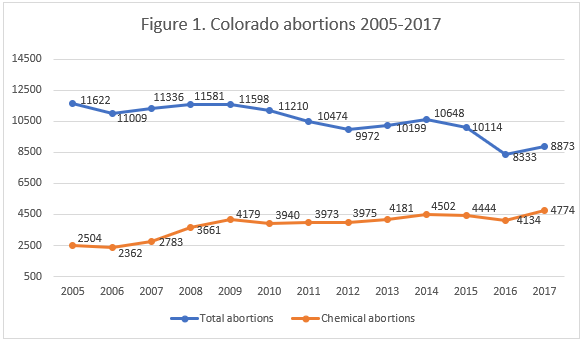
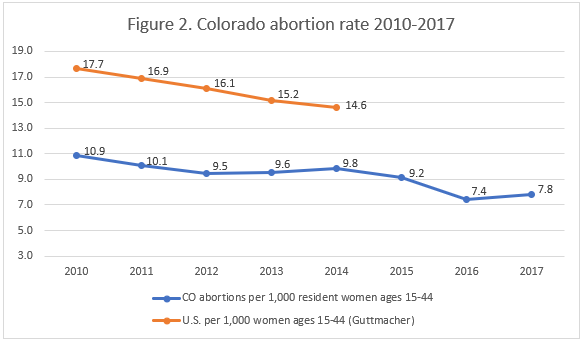
- Colorado has not yet reported the state abortion rate for 2017. Rates were calculated by the Charlotte Lozier Institute using population estimates from the United States Census Bureau. The rates were calculated using the following formula: (total number of abortions performed in Colorado ÷ number of resident women ages 15-44) x 1,000.











